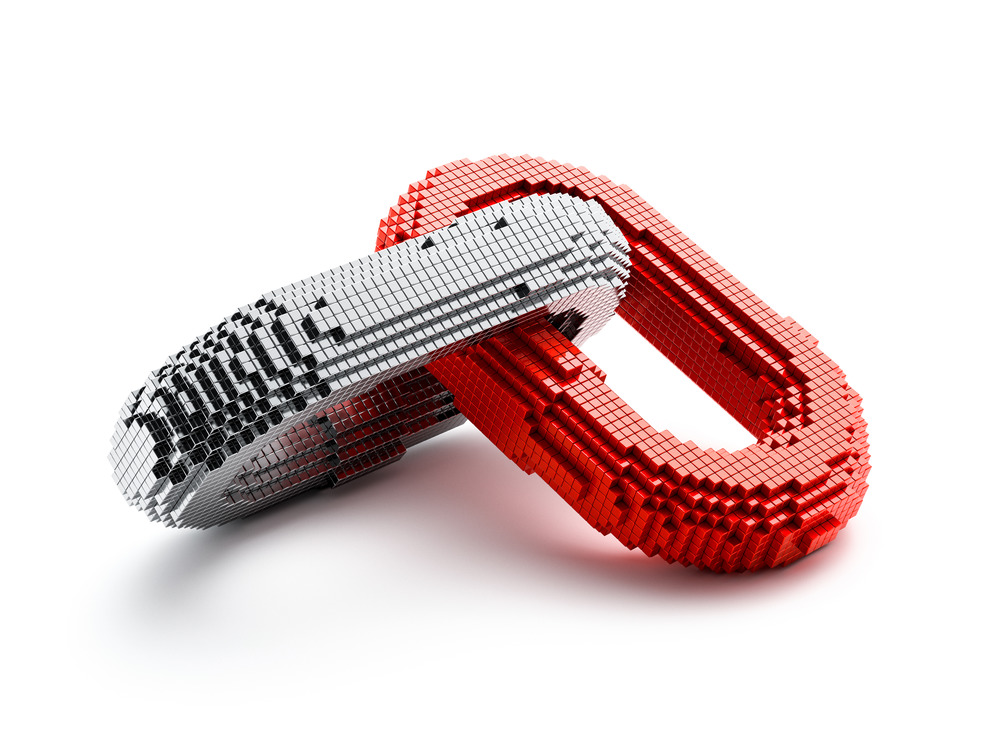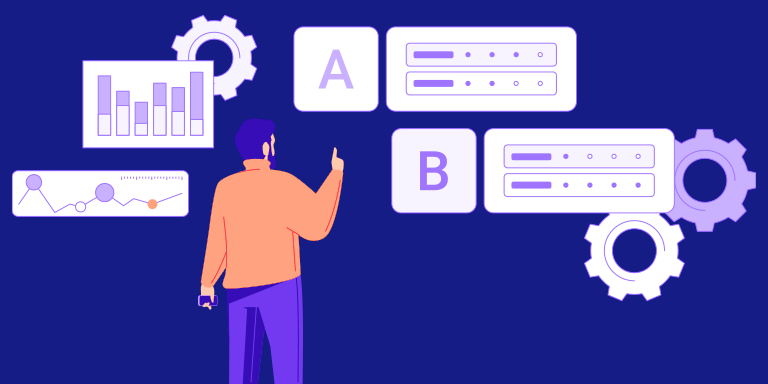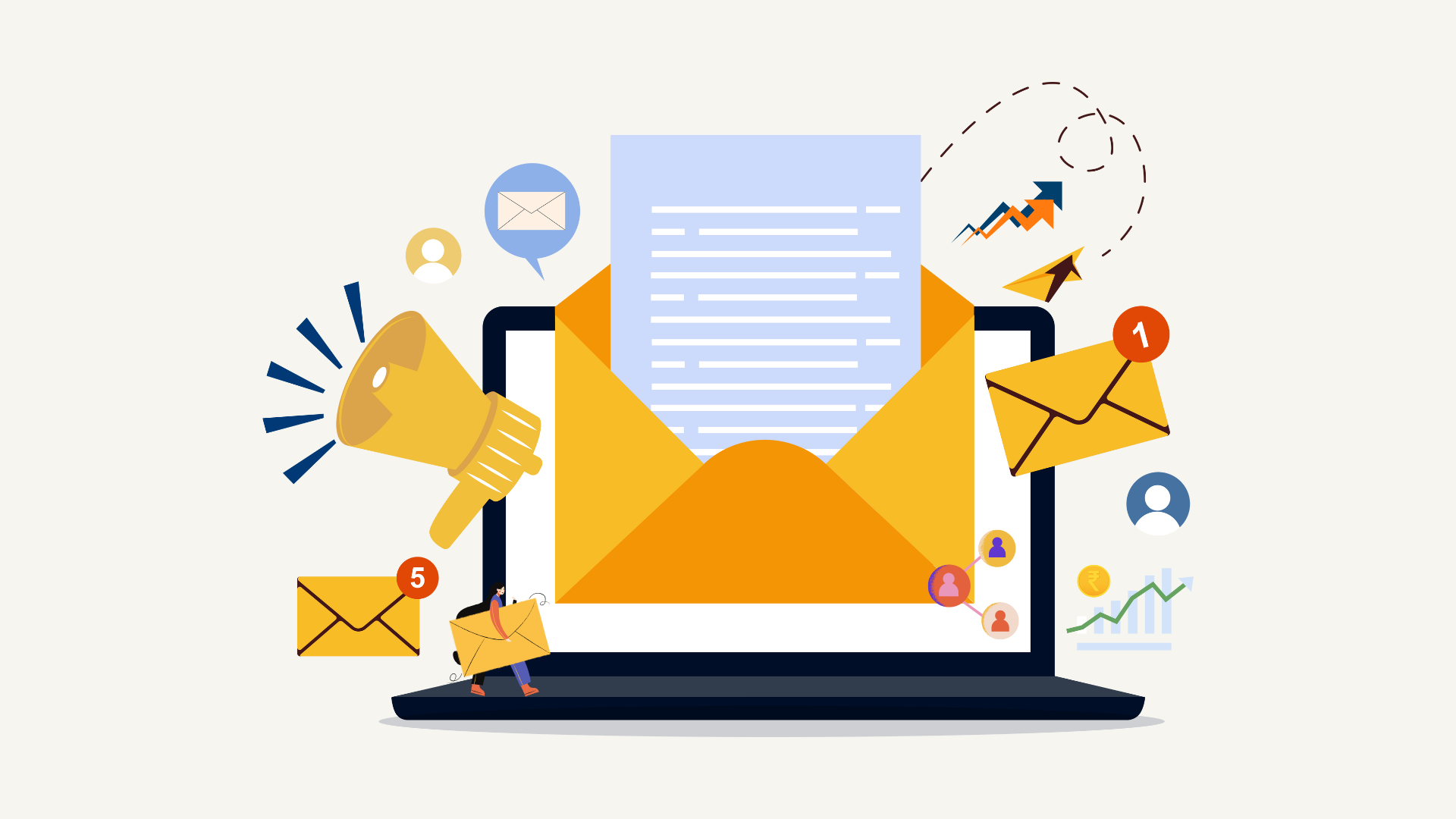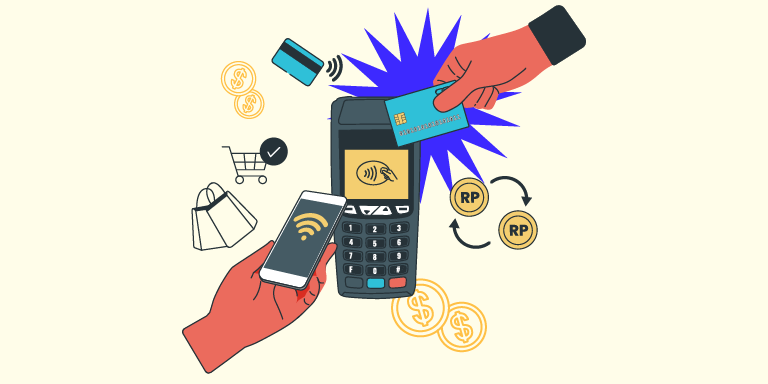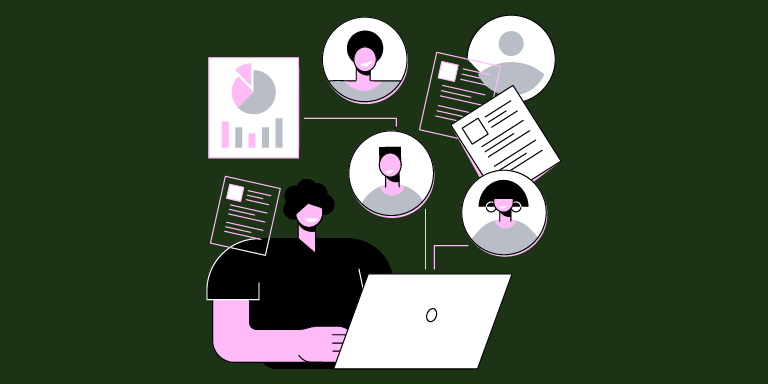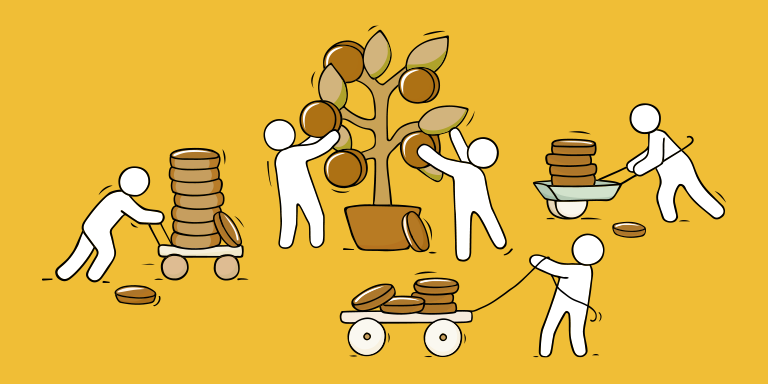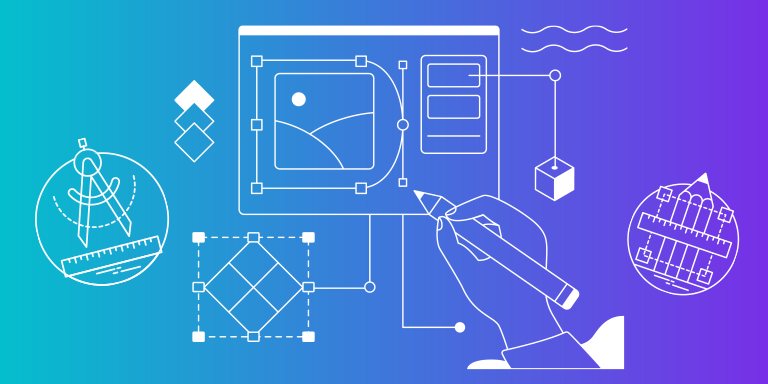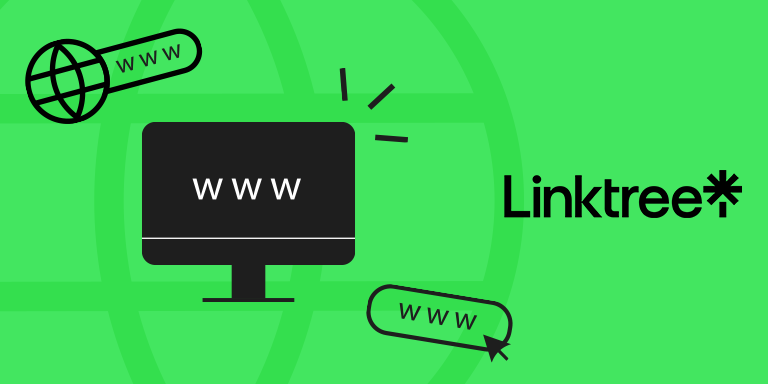Blockchain. It seems to be everywhere these days. From supply chains to crypto, everyone seems to be buzzing about this new technology. But understanding how blockchain works can feel overwhelming. What the heck is a consensus mechanism? How does blockchain protocol work? Do you want a private or public blockchain network?
Fret not. We’re here to help entrepreneurs like you wrap their heads around anything and everything trending in the business space. That’s why we offer a host of free training on the most in-demand topics.
Today, we’re going to break down everything a beginner might wonder about blockchain. We’ll do it in plain English so it’s easy to understand, and we’ve even included a glossary in case you’re scratching your head, wondering what “hash” is.
What Is Blockchain?
Blockchain is a database that stores transactional records. Unlike traditional databases, blockchain technology stores information in segments, known as blocks, that are chained together. Blockchain is used to create an irreversible record of a product’s history. Currently, blockchain is most widely used in cryptocurrencies like Bitcoin and Etherium and in the novel digital art sales of non-fungible tokens (NFTs).
Because of blockchain’s ability to create an unchangeable receipt, it has potential applications that far outweigh the current uses. Blockchain technology could be applied to real estate, art and collectible sales, legal contracts, medical records, and the global food system.
The Benefit of Blockchain
Proponents of a systemic move towards the blockchain revolution cite the security that comes from a distributed ledger. Because the ledger is public, shared, and data is unchangeable once it’s been added, blockchain has the ability to make digital transactions much more secure and transparent.
Transparency is one of the most appealing aspects of using a blockchain platform outside of the sale of crypto assets. This would allow for more transparency in markets like art sales, where buyers risk purchasing fraudulent or illegally obtained goods. Theoretically, using blockchain to track these transactions would curb those practices because everyone involved in the transaction would be able to see the blockchain history. Additionally, blockchain has the potential to provide clear tracking through the supply chain of products that are currently difficult to track. Making it more transparent will make it easier to see if ethical business practices are followed at every step of the supply chain.
How Does Blockchain Work?
The shortest, simplest explanation of how blockchain works is that it creates a digital record of every transaction. Each record has to be verified, and once it is, it can’t be changed. That’s the gist. Now that you know what to expect and how to interpret the explanations that follow, let’s break it down into increasing levels of technical detail.
The Simplified Explanation of How Blockchain Works
- A new transaction is started or begins.
- A series of computers “fact check” the transaction, checking for fraud.
- Once the transaction is confirmed as valid, it is entered onto the item’s permanent record. Think of it as the technological version of writing “purchased by Sam Dennie 12-13-21” in Sharpie directly on the product.
- Every time the product is bought or sold, a receipt-like record is added to the blockchain.
The Step-By-Step Technical Explanation of How Blockchain Works
- A new blockchain transaction is initiated.
- The transaction is transmitted to a network of globally distributed peer-to-peer networks, known as nodes, that verify the transaction via computer algorithms.
- The transaction is either denied (if found to be counterfeit) or confirmed (legitimate). Then it is added to a block on the distributed ledger.
- The new block is added to the full list of blocks or transactions in the item’s purchase history. Once added, it cannot be removed or altered.
- The transaction is complete.
How Can Entrepreneurs Use Blockchain?
There are a variety of ways you can leverage blockchain technology for a successful business venture. Many of these blockchain applications are still in the early, developmental stages, which means that they have a lot of potential but will require a greater investment and risk than other business models. The pro of starting a blockchain-based business is that it allows you to start a dynamic technology company even if you don’t have the computing power that typically comes from in-house servers. Here are some of the most interesting and promising ways that entrepreneurs can use blockchain:
Creating Smart Contracts
Entrepreneurs can use blockchain to create smart contracts, which are essentially self-verifying, unforgeable contracts. Because the contracts are stored on the blockchain ledger, they can’t be changed. This protects you from manipulation and reduces the chances of litigation based on the legitimacy of a contract.
Improving Supply Chain Logistics
If you have experience in supply chain logistics, you might be curious about using blockchain to build a supply chain business. There’s tons of potential here. Major corporations and startups are galvanizing around ways to leverage the distributed ledger technology within supply chain logistics because of blockchain’s unique ability to simultaneously increase visibility and reduce product loss. There’s business potential in starting a blockchain business that tracks movement throughout the supply chain, and there’s also tremendous potential in finding ways to take that data and summarize it in dynamic reporting that can then be sold to related companies.
Sharing Records and Information
Blockchain also allows you to securely share records, providing innovation opportunities in industries like healthcare. If your business records or stores healthcare data, you can explore ways that blockchain can both protect privacy and prevent fraud. A startup in London has already started leveraging the technology to create novel business opportunities. The company Medicalchain has created a blockchain-based platform to store and record medical records. Anthem is also partnering with another smaller company, Doc.ai, to leverage blockchain for medical research.
The Blockchain Glossary—Understanding the Components of Blockchain
The blockchain system involves several technologies that can get confusing for the uninitiated, so let’s get you initiated. We’re going to break down what all these individual terms mean so that you know how to talk blockchain like a pro, and until then, you can always reference this section if you get lost.
Nodes: A node is the decentralized “peer-to-peer” computer network responsible for verifying blockchain transactions. Blockchain works by storing data in a decentralized ledger, which means there isn’t a single source for the information. A node refers to each place that the information is stored. Nodes communicate with each other within a network and share and transfer information about new data, referred to as blocks.
Distributed ledger: A distributed ledger, blockchain ledger, or shared ledger is a shared and synchronized database across multiple locations or institutions. By distributing the ledger, or official record of a product, the ledger is protected against fraud and hacking.
P2P network: P2P network is the shorthand for “peer-to-peer network.” In a P2P network, a group of devices, or nodes, communicate with each other without any central administration or server. This means that each device in the decentralized network has the same power and can complete the same tasks. Because blockchain information isn’t stored in a single place, it’s incredibly difficult to hack.
Blockchain architecture: The organizational system that creates, stores, and manages blockchain data.
Private blockchain: Private blockchain is a specific type of blockchain architecture where a single organization has authority over the network. A private blockchain network is not open to the public and is therefore not fully decentralized (as the public option is). Private blockchain is best suited for companies where privacy is necessary. It has the potential to prevent leaks to the press, for example.
Public blockchain: A public blockchain network allows anyone to join at any time. Public blockchain doesn’t put any restrictions on who can participate or see the ledger.
Consortium blockchain: Consortium blockchain is the middle ground between public and private blockchain. Control of the blockchain is shared amongst a group so that control isn’t limited to a single blockchain developer. But because the control is ultimately limited, it’s considered to be closer to private blockchain.
Cryptography: Cryptography refers to secure communication techniques that allow you to encode and protect data.
Private key: Also known as a secret key, a private key is used to encrypt and decrypt data within cryptography. Private keys are typically long, randomly generated sequences that can’t be easily guessed. Think of it as a more complicated version of the “6-digit code” you may be sent during 2-factor authentication.
Cryptographic hash: Cryptographic hash is an algorithm that takes data of any size and translates it (or “maps it”) into a fixed size. Cryptographic hash can only be performed one way, and the output is referred to as “hash.”
Block reward: A block reward refers to the transaction fee awarded to Bitcoin miners who successfully mine a block of the currency. Block rewards are used in Bitcoin transactions, the most widely used application of blockchain technology. Based on how high the demand is block rewards can increase or decrease.
Digital signature: Digital signatures are the cryptographic equivalent of an individual signature on a document. Unlike handwritten signatures, digital signatures are almost impossible to forge, and as such, they function as the fundamental building blocks of blockchain transaction data.
Smart contract: Smart contracts are transactions that are run when predetermined conditions are met.
Understanding the Blockchain-Supply Chain Relationship
Blockchain has the potential to usher in improvements throughout supply chains. Because of the transparency that comes from using a decentralized digital ledger, blockchain can increase traceability for many different industries. Blockchain companies can record the price a product is sold for in addition to the date and location. You can also track other pertinent information like the quality of the product at the time of sale and any relevant certifications.
Because of the ability to track this information, blockchain can help increase compliance and reduce grey market transactions (i.e. the unofficial trading of financial securities). You can also reduce product loss, prevent counterfeit products, and improve visibility into how a product moves through the supply chain (which can give businesses the data necessary to increase operational profitability).
A Quick Blockchain Tutorial
Still, having a hard time understanding exactly how blockchain functions in real life? Let’s walk through a real-world example to help you get up to speed on how blockchain technology works in practice. Because Bitcoin is the most common use of blockchain implementation, let’s take a look at the digital currency.
Blockchain is used as the digital ledger for all Bitcoin transactions and history. Blockchain records everything from the mining of a Bitcoin to individual crypto transactions. Let’s look at an example.
- A Bitcoin purchase is initiated.
- The transaction is submitted to different nodes on a P2P network to verify the transaction.
- Once the transaction has been certified, the purchase information (including the date, price, buyer/seller, etc) is added to a block and recorded on the individual Bitcoin’s blockchain.
- The Bitcoin is added to the purchaser’s Bitcoin wallet.
What Is Blockchain Used For?
Here’s a quick list of the most common blockchain applications—so far.
- Virtual currency
- Secure contracts
- Real estate
- Supply chain transparency
- Secure data transfers
- Data tracking
- Establishing origin and purchase history for collectibles
- Digital asset tracking (like NFTs)
Ready for More Resources?
Looking to expand your knowledge. Check out our free training.
